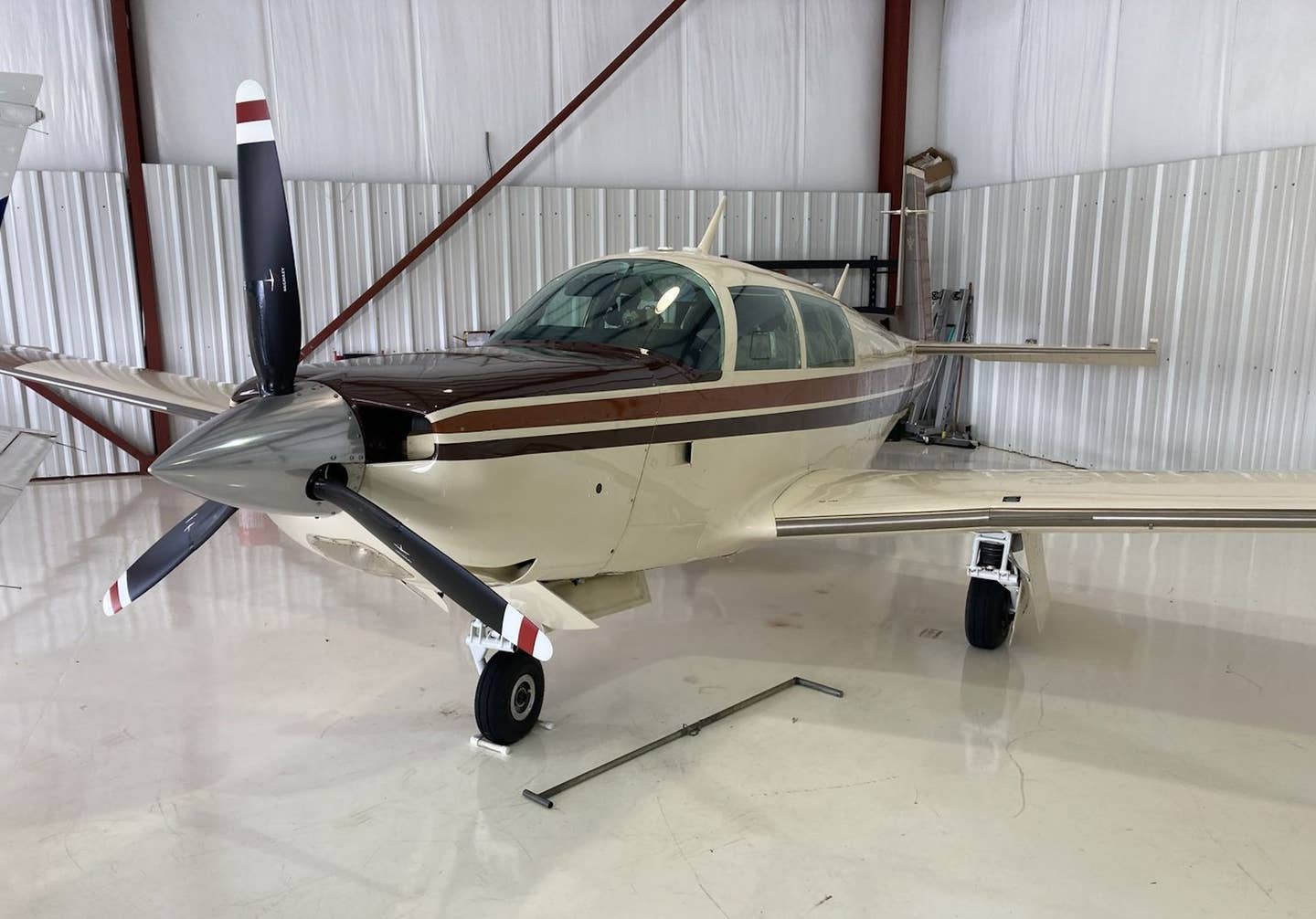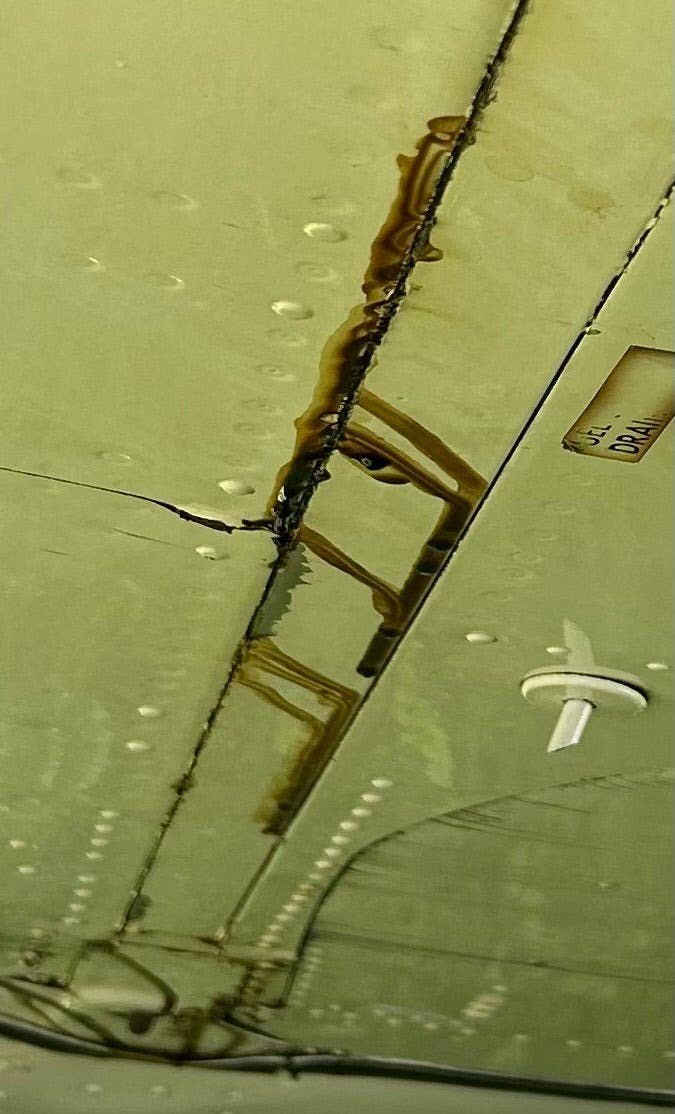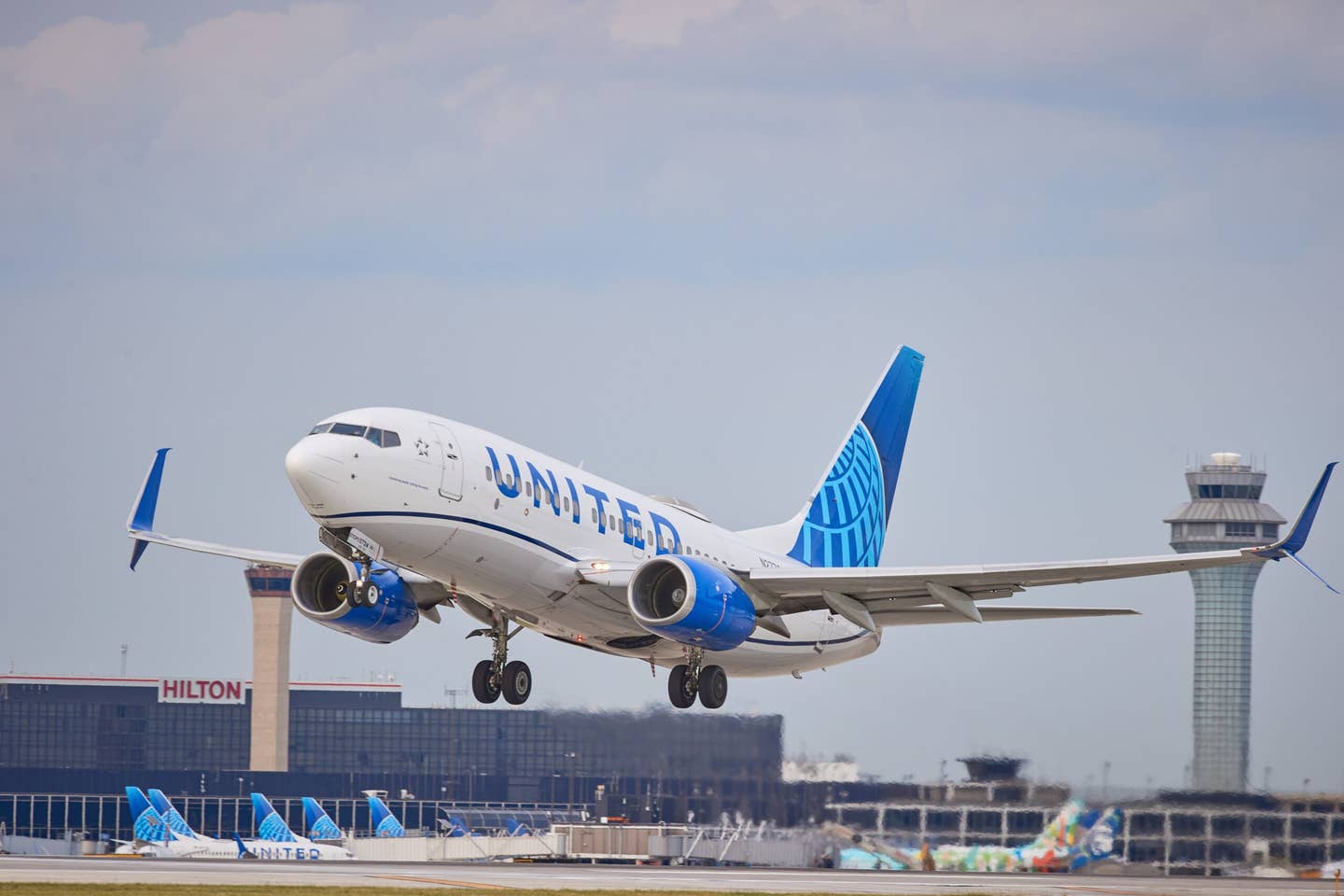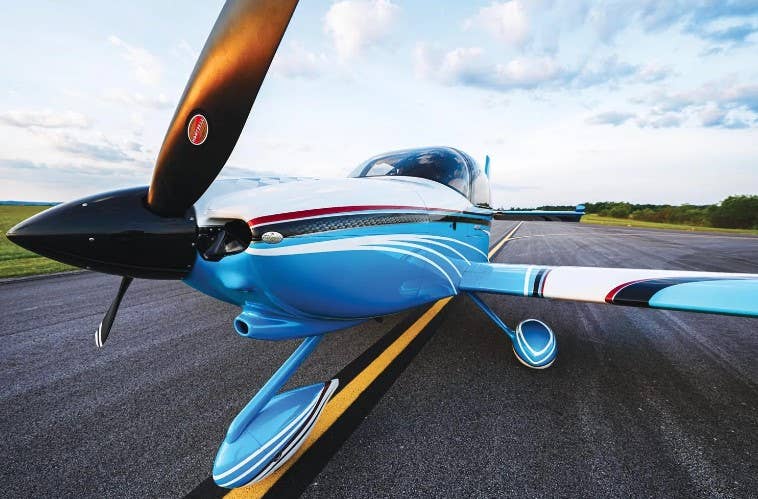GAMA Reports Year-Over-Year Increase in Aircraft Shipments In a ‘Governed’ Recovery
With three years of measured improvement, the general aviation industry tracked well to plan in 2022, navigating issues of workforce, regulatory slowdowns, and ongoing supply chain constraints.
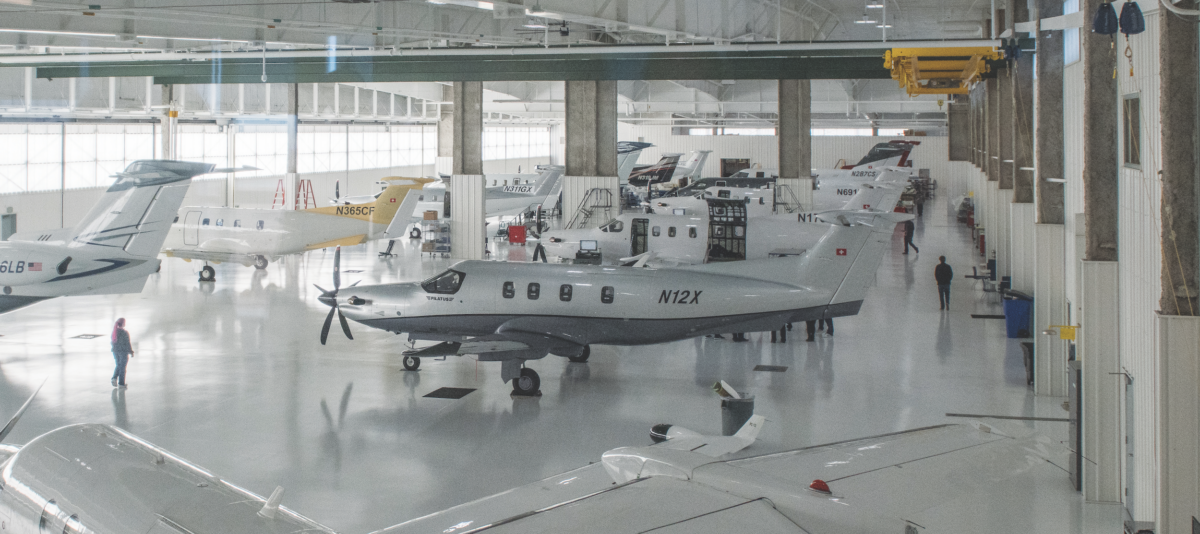
The Pilatus PC-12 model was the most-delivered single-engine turboprop for 2022, shown in its completion phase at Pilatus Business Aircraft in Colorado. [Credit: Glenn Watson]
Workforce. Supply chain. Innovation to a sustainable future.
The themes at the General Aviation Manufacturers Association 2023 State of the Industry press conference echoed almost precisely those of the past three years. But it was served with a bright lemon twist, as deliveries indicate a recovery to near 2019 levels for turbine, turboprop, and piston aircraft serving business and personal aviation.
In its 2022 General Aviation Aircraft Shipment Report, GAMA registered more unit totals than 2019 (2,818 turbine and piston, worldwide vs. 2,658) yet slightly lower total aircraft billings (at $23.515 billion at the time of the 2019 report in February 2020 vs. $22.866 billion as released on February 22, 2023).
Meeting the pent-up demand for air transportation faces a web of challenges intertwined: a workforce with gaps in experience as well as headcount, a supply chain still oscillating through global health and conflict concerns, and the desire to incorporate the innovation that the industry leads the world in motivation to deliver.
As GAMA president and CEO Pete Bunce pointed out in his remarks, “what other mode of transportation has not one, but two museums in the Smithsonian structure? That is how important aerospace is to the fabric of U.S. society.”
In the vacuum left in more than 140 locales that saw a drop in commercial air service in recent years, general aviation has stepped in to fill the need—and it’s okay that the industry is meeting that demand at a measured pace. “I’m not sure that’s necessarily a bad thing,” said Eric Hinson, president and CEO of Simcom International and GAMA Board Chairman for 2023.
“As we’ve slowly recovered post-pandemic on supply chain,” said Hinson, “it’s acting sort of like a governor on the level of activity in terms of aircraft production that we’re seeing…having lived through a couple of those the previous cycles, it would be nice to see [this be] a little more moderated. I think we still have quite a bit of room to go.”
Looking Back to GAMA 1974
In his remarks, Hinson pointed out the distinct differences between the GA shipments in 1974, nearly 50 years ago—when GAMA first came together in New York—and today. While in 1974, GAMA’s 28 member companies reported 14,166 deliveries and a total booking of $910 million, in today’s report, more than 140 member companies saw less than 3,000 shipments, yet booked nearly $23 million in revenue. More tellingly, in 2023 dollars, the $910 million becomes $5.5 billion—making for an average cost of those aircraft $400,000. Instead, the average figure booked for an aircraft delivered in 2022 was $8 million.
While the dramatic uptick in value can be partially ascribed to the advance of turbine aircraft—only 5 percent of bookings in 1974 were for business jets vs. 50 percent today—“that doesn’t explain the ten-fold increase in price,” said Hinson. “The fact that today we have aircraft that are substantially more capable than were being delivered in 1974. We have business jets that can fly halfway around the world…We have aircraft that can cruise at very close to the speed of sound… We have engines that burn [in some cases up to] 30 or 50 percent more efficiently…We have avionics technology that has made aircraft safer.”
Year-end Aircraft Shipment and Billing
| Aircraft Type | 2021 | 2022 | % Change |
| Piston Airplane | 1,409 | 1,524 | 8.2% |
| Turboprops | 527 | 582 | 10.4% |
| Business Jets | 710 | 712 | 0.3% |
| Total Airplanes | 2,646 | 2,818 | 6.5% |
| Total Airplane Billing | $21.6 billion | $22.9 billion | 5.8% |
| Piston Helicopters | 181 | 194 | 7.2% |
| Turbine Helicopters | 631 | 682 | 7.6% |
| Total Helicopters | 812 | 876 | 7.5% |
| Total Helicopter Billing | $3.7 billion | $4 billion | 6.8% |
Piston Deliveries
As a segment, the piston group booked a total of $977 million with 1,524 units delivered. “Shipments were up 8.2 percent,” said Hinson, “and if you look at that from the beginning of [2010] that’s a 48 percent increase over that period of time.” The mix has changed, with piston aircraft growing in complexity, with the incorporation not only of glass on the flight deck—including advanced avionics such as autoland and envelope protection—but also in fadec-enabled powerplants and more efficient engines.
Cirrus Aircraft led the fixed-wing piston segment with 539 shipments (the SR20, SR22, and SR22T), or more than 39 percent of the single-engine piston market.
Turboprop Deliveries
The turboprop market registered the highest year-over-year increase again, with 582 shipments in 2022 vs. 527 in 2021, for an increase of 10.4 percent. The largest volume of deliveries in the hotly contested single-engine turboprop market went to Pilatus Aircraft, with 80 units of the PC-12 out the door, followed by Daher, with 73 total units (including the TBM 960, Kodiak 100, and Kodiak 900), and Textron Aviation, with 71 of the Caravan 675 and Grand Caravan EX.
What we’re seeing now, said Hinson, is that, instead of an owner-pilot moving from the single-engine piston to the twin-engine piston, that pilot moves from the single-engine piston to the single-engine turboprop.
In the multiengine turboprop segment, the Beechcraft King Air continues to dominate, with 75 of the total 77 shipments from the legendary twin.
Jet Deliveries
While the jet market appeared to be “stagnant” on paper, with just two more units delivered, the total value of bookings ticked up more significantly, 4.5 percent, at $19.8 billion, said Bunce.
Among the leading OEMs, Gulfstream Aerospace delivered 120 of its total portfolio, to the tune of $6.6 billion, with the G500/G600/G650/G650ER totaling 96 of those shipments. Embraer totaled 102 business jet deliveries in 2022, while Cirrus led single-engine jet deliveries, with 90 of the SF50 Vision Jet over to customers.
A handful of new aircraft made it to market last year, including the Airbus ACJ220-100; Daher Kodiak 900 and TBM 960; Elixir 912iS; Extra Aircraft Extra NG, Tecnam Aircraft P-Mentor; Textron Aviation CE-408 SkyCourier, CE-525 M2 Gen2, and CE-560XL Citation XLS+ Gen 2; and Thrush Aircraft S2R-510, which all entered into service in 2022.
Delays in Process Improvement at FAA
One of the most critical issues faced by the industry is the ongoing challenge created by several factors at play at the FAA, starting with the leadership gap left by the delay in confirming a new FAA Administrator. “Acting, acting, acting, down the list,” said Bunce, recounting the temporary position holders.
Speaking to the congressional hearing hosted by the House Aviation Subcommittee on the FAA’s latest reauthorization bill earlier this month, Bunce said, “Despite the good work of thousands of dedicated FAA employees, delays in the promulgation of rulemaking, policies, and guidance have inhibited the progression of safety-enhancing aeronautical products through the certification system. Contributing to these delays is a large backlog of technical standards, policy memos, orders, and advisory circulars. Improvements are needed to the overall process to address development of safety standards.”
“The FAA and DOT internal administrative process has resulted in significant delays to promulgate and implement the results of these consultative efforts which negatively impacts this collective strength” of the ARAC process. Bunce noted several instances where other national aviation agencies such as EASA have implemented the outcomes of the ARAC process prior to FAA implementation of the recommendations in the U.S.
In fact, properly utilizing the bilateral agreements in place between authorities such as the FAA and EASA is one key to solving some of these issues. “We’ve got to get back to a system where we’re taking that type of approach, because otherwise the regulators are going to get further and further behind,” said Bunce at the conference.
EAGLE Stymied by MOU
Another issue of great concern to the industry lies in the requirement to transition to unleaded avgas from the currently broadly used 100LL—a transition the industry welcomes yet understands must be addressed at a measured pace.
A recent report in FLYING outlined how the city of San Jose had struck a memoranda of understanding (MOU) with the FAA to stop litigation against it for banning the sale of leaded fuel. Bunce addressed this move directly and in no uncertain terms that, in his estimation, it flew in the face of what EAGLE seeks to achieve—and it may serve as a means by which other locales can shutter an airport. “A lot of communities are using this issue to close their airports,” said Bunce. “Pure and simple. They have been trying to close Reid-Hillview for years and years, and when they couldn’t do it on noise, they tried to starve the airport and take SMO’s model—Santa Monica’s airport—and they tried to apply it, and they’ve used this issue to try and close that airport.” Other communities are likely to take up the same template, he continued.
“What DOT has done,” said Bunce, "with this MOU is produce a model and encourage other communities to do that before this industry is ready to transition. We’re fully committed to transition by the end of 2030…but that MOU is so full of holes, and really it doesn’t…have any teeth to it."
Youth Workforce Panel
One highlight of the conference this year was a panel led by GAMA board member Maria Della Posta, president of Pratt & Whitney Canada. Five individuals at various points along their early career paths were selected to answer questions on how they got into the aviation industry—and how it might entice more of their cohorts to do the same. Diversity and representation form one key, according to panelist Rosa Lee Argotsinger, director of safety and security programs for Textron Aviation. “Airlines are setting targets…we need that level of intention.”

Subscribe to Our Newsletter
Get the latest FLYING stories delivered directly to your inbox

